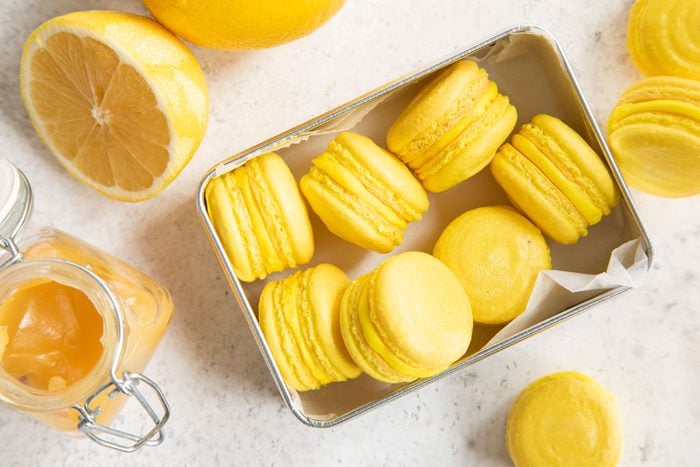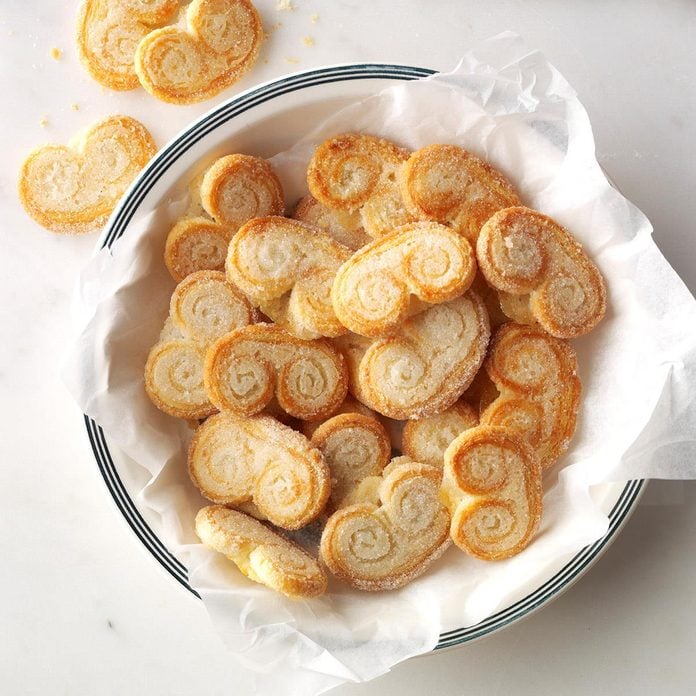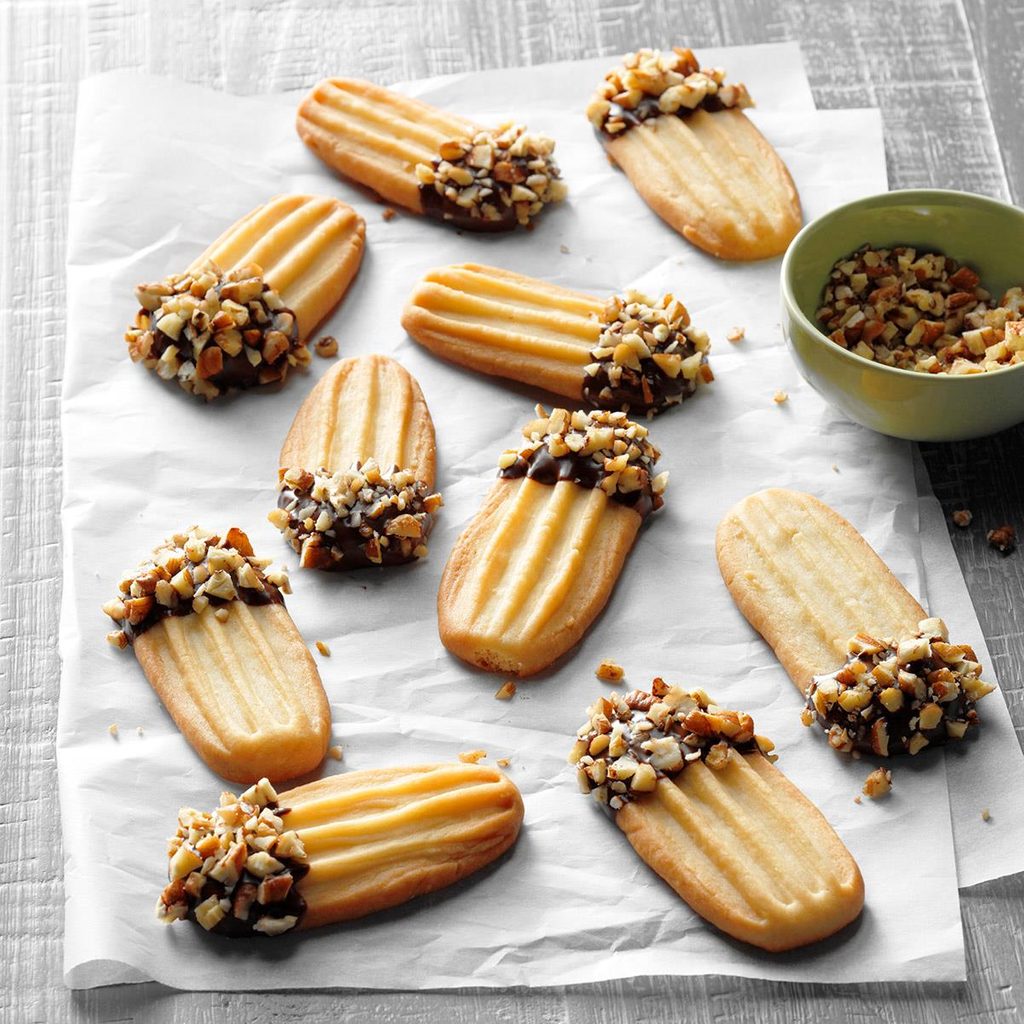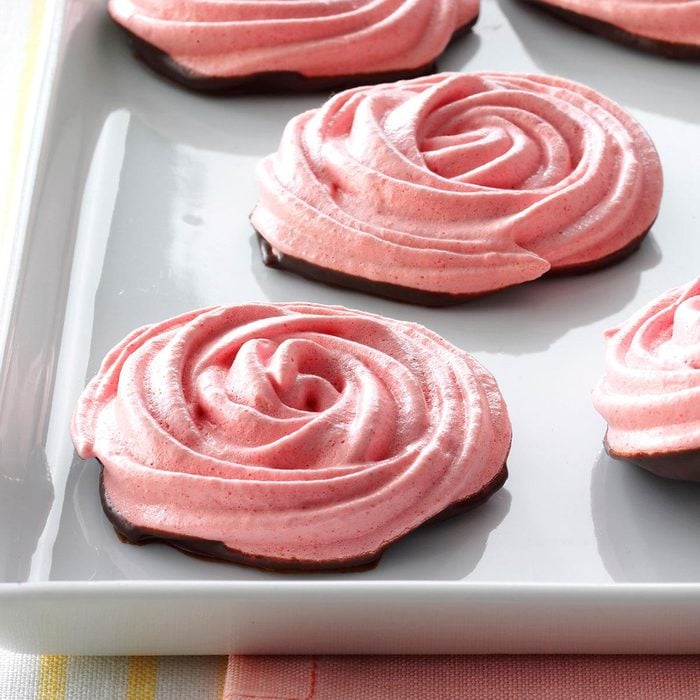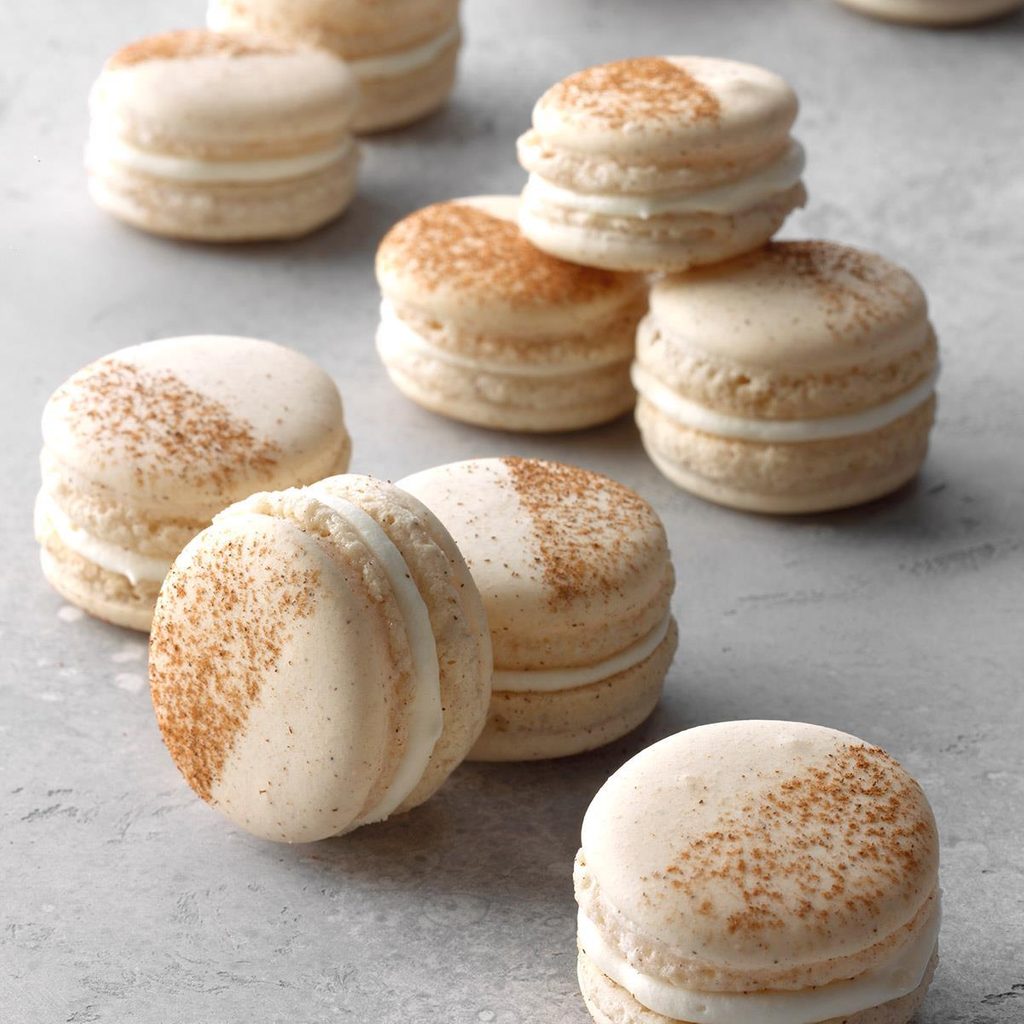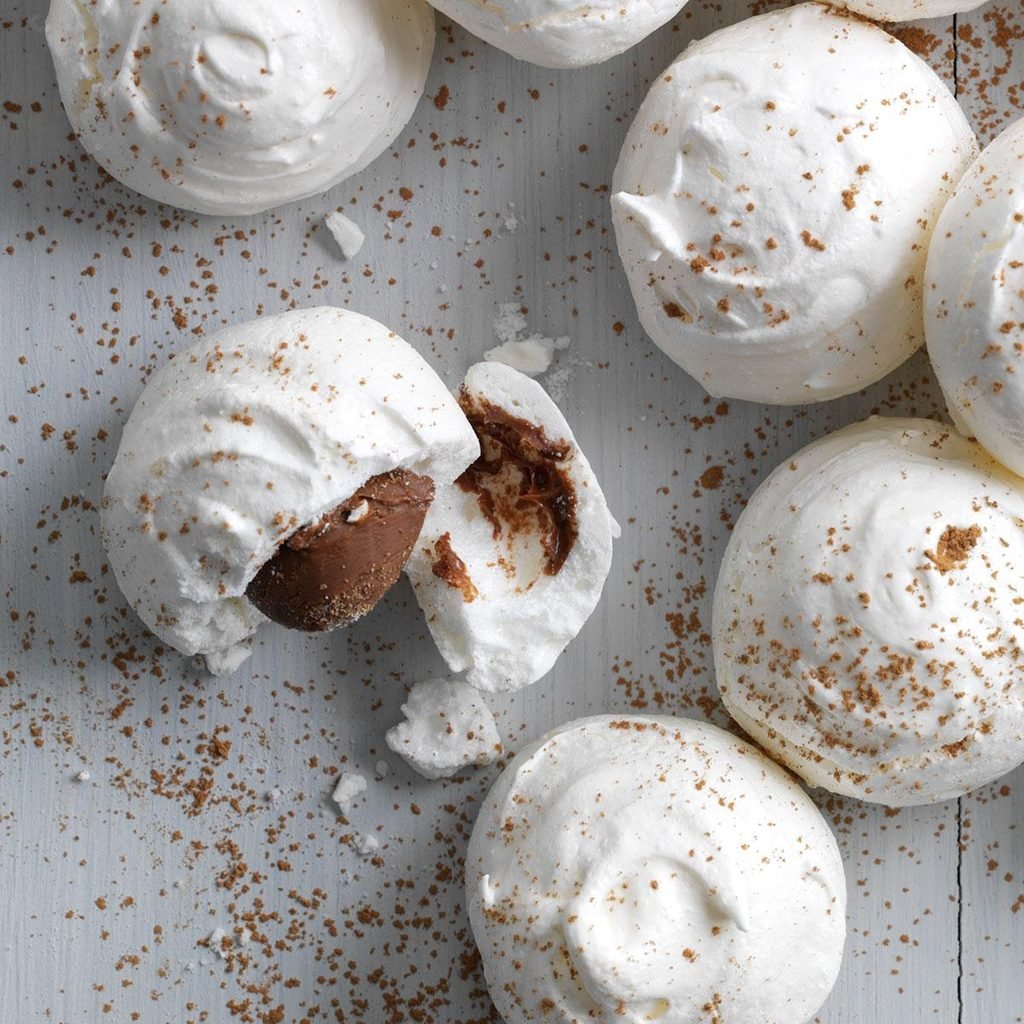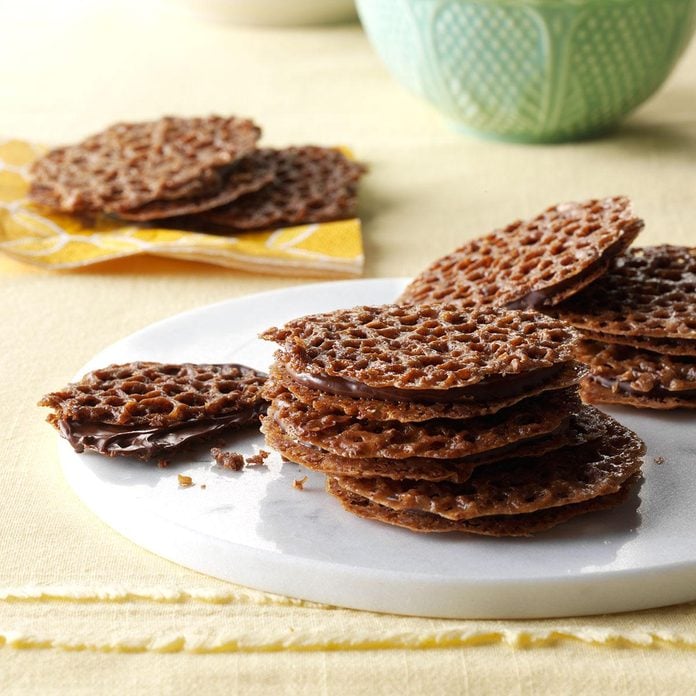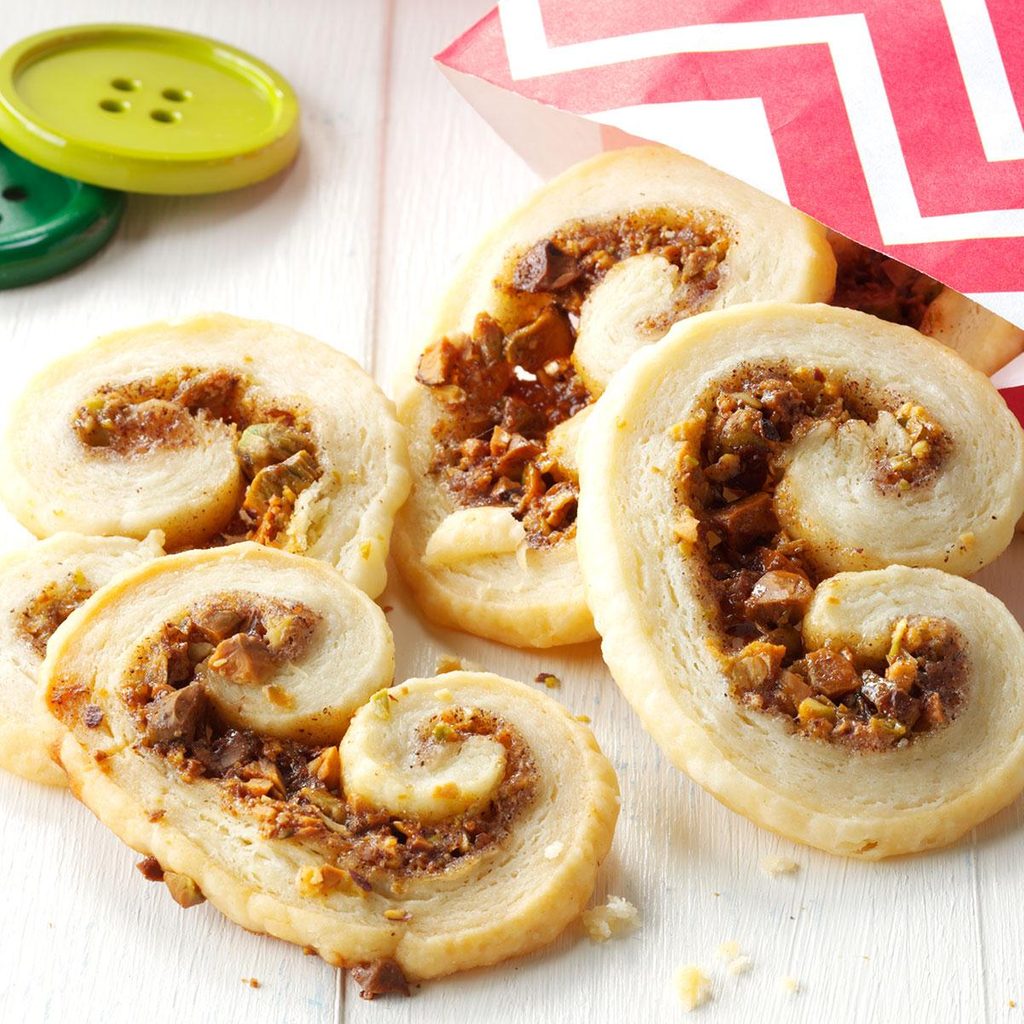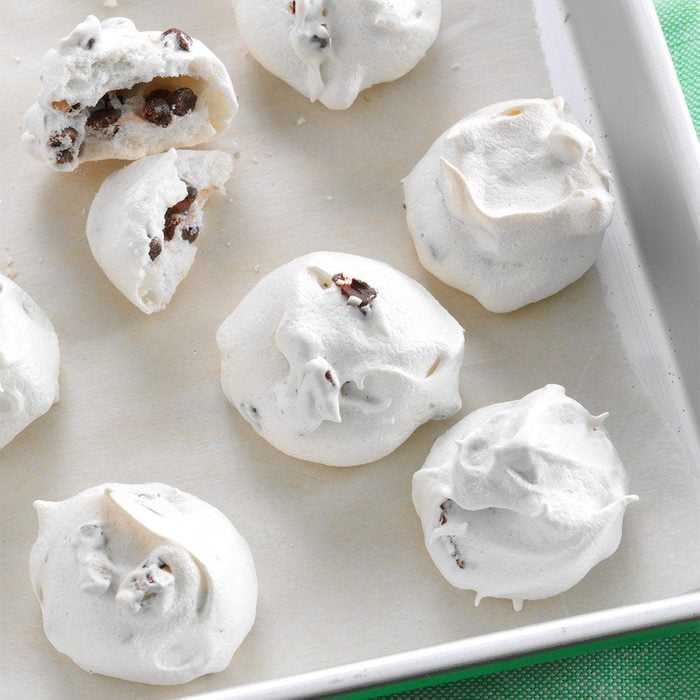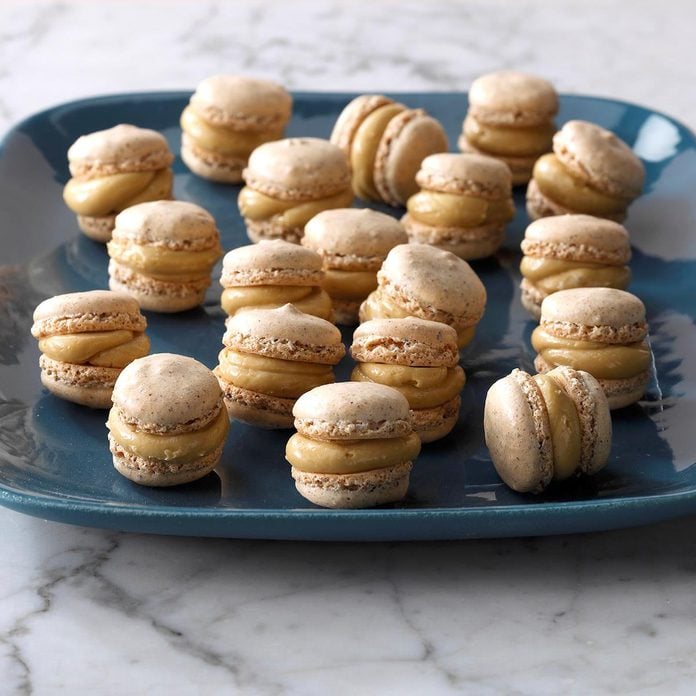You can find macarons everywhere, from an upscale bakery to the freezer aisle at Trader Joe’s. There may be no other treat that comes in as many flavors, from vanilla and raspberry to orange blossom and mojito. Don’t confuse them with Macaroons, as they are two different bakery items. These Oreo-sized treats cost three times as much as anything else at the bakery.
Why are macarons so expensive? Here’s what you’re getting for your money.
Macaron Ingredients Are Expensive
Unlike most bakery treats, macarons are not made with all-purpose wheat flour, which even a home cook can pick up at the supermarket for less than 50 cents a pound. Instead, they’re made with almond flour, which costs more than nine times as much—and that’s at Costco.
“Finely ground almond flour gives structure, texture and mild flavor to macaron shells,” says Taste of Home food stylist Josh Rink. “Macarons are meringue-based confections.”
“They’re prized for their combination of textures: lightly crunchy exterior, chewy center and creamy filling,” Josh adds. Trying to make them with a less-expensive ingredient like all-purpose flour would change the texture. The result would not be a true macaron. We’ve found the best Trader Joe’s macarons for you.
Here’s the difference between macaroons vs. macarons.
Making Macarons Takes Time and Patience
You could make 10 other types of cookies in the time it takes to make macarons. OK, maybe we’re exaggerating a bit. But here’s the deal.
“Macarons are certainly more ‘hands-on’ than traditional chocolate chip cookies and have a number of steps—like sifting, whipping, folding and piping,” Josh says.
After making the batter, the baker transfers it into a piping bag. If you’ve ever piped frosting, you know using a piping bag takes a while to get the hang of everything from filling it without air bubbles to squeezing it with just the right amount of pressure.
The process takes a lot more skill than using a cookie dough scoop. You have to hold the piping bag above the parchment paper at the correct height, squeeze out the right amount of batter, stop squeezing the bag, then twist and lift it to make each macaron shell the right thickness.
After tapping out or popping any air bubbles, the macaron shells have to sit at room temperature until they form a skin. Then they get baked and completely cooled. After baking, the shells have to be paired to match each other in size as closely as possible.
Even after all the components are made, they still have to be filled and assembled!
Half of each pair then gets flipped upside down to be filled—which requires another round of piping. You need just the right amount of filling, the thickness of one shell. Too much and it will ooze out the sides.
Finally, the macarons go into the refrigerator for 8 to 24 hours to mature and allow the filling to soften the shells.
“I’d never suggest making macarons when you’re feeling impatient,” Josh says.
Our Recipes for French Cookies
PalmiersIt takes just two ingredients to make these impressive but easy-to-do French pastries, which are often called palm leaves. —Taste of Home Test Kitchen, Milwaukee, Wisconsin
French MacaronsEven decorated simply—a sprinkle of sugar, a drizzle of icing—these stylish beauties are part of our
creative Christmas cookies collection. They will be the showstoppers on any cookie tray. —Josh Rink, Photo Stylist
Taste of Home. Find out
why macarons are so expensive.
Chocolate-Tipped Butter CookiesThese wonderfully moist morsels are too tempting to resist. They melt right in your mouth. Rather than sprinkling the chocolate tips with nuts, you can roll them in red and green jimmies or leave them plain. —Charolette Westfall, Houston, Texas
Chocolate-Dipped Strawberry Meringue RosesEat these pretty treats as is or crush them into a bowl of strawberries and whipped cream. Readers of my blog, utry.it, went nuts when I posted that idea.—Amy Tong, Anaheim, California
Lemon Tea CookiesThese sandwich cookies taste rich and buttery and have a lovely lemon filling. The recipe has been in our family since the 1950s, when my mother got it from a French friend in her club. —Phyllis Dietz, Westland, Michigan
Cinnamon Roll MacaronsThese macarons are a fall and winter staple for me. Inspired by the classic cinnamon roll, they are a delicious treat for a cold or snowy day. These pair well with a mug of tea, and can be eaten as a dessert or just a snack. Other fillings would work well with this—including custard, mousse, ganache or other buttercream.
—Elizabeth Ding, El Cerrito, California
Meringue KissesThere's a nice chocolaty surprise inside these sweet kisses. They're my husband's top choice each Christmas.—Tami Henke, Lockport, Illinois
Chocolate Lace CookiesMy mother and I make these elegant lace cookies filled with melted chocolate chips. Baking together is a delightful way to spend an afternoon. —Stacey B., Stillwater, Oklahoma
French Christmas CookiesThese moist treats will have everyone reaching for more. Folks tell me they enjoy these French Christmas cookies. In fact, the batches I make ahead for my family and
store in the freezer until Christmas seem to mysteriously disappear each year—even though the chocolate topping I put on before serving hasn't been added yet! —Judy Wilder, Mankato, Minnesota
Waffle-Iron CookiesThe recipe for these cookies is the easiest to find in my book because the page is a beautiful mess covered with fingerprints, flour smudges and memories of more than 30 Christmases! I made these with my daughters, and now I make them with my granddaughters. —Judy Taylor, Quarryville, Pennsylvania
Pistachio PalmiersMy family loves palmiers from the bakery, so I created my own recipe. These have a Middle Eastern twist with the addition of rosewater, honey and a touch of cardamom. They are light and crisp—a special treat for the holidays. —Deborah Hinojosa, Saratoga, California
Surprise MeringuesThese crisp, delicate cookies are light as a feather. Mini chocolate chips and chopped nuts are a delightful and yummy surprise in every bite. Mom knows this fun dessert is a fitting finale to a big meal. —Gloria Grant, Sterling, Illinois
Hazelnut MacaronsYou don’t have to be an expert in French cooking to whip up these sandwich cookies. The crisp, chewy macarons require attention to detail, but they’re not hard to make—and they’re simply a delight, both for personal snacking and giving as gifts!
—Taste of Home Test Kitchen
French Noisette CupsThe word “noisette” is French for hazelnut, and these delightful tassie-style treats have a yummy toasted nut flavor in a golden and delicious pastry. —Marie Rizzio, Interlochen, Michigan
